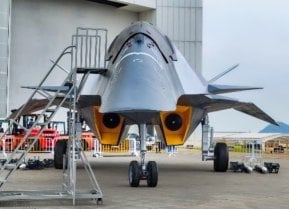As Morale Tanks, Discontent Plagues Russia's Military in Ukraine War
This is not the first time discipline and morale issues in the Russian forces have turned ugly. Indeed, in the summer of 2023, the situation got so bad that Moscow’s trusted Wanger Group mercenaries almost toppled the regime.
Discipline issues continue to plague the Russian military as casualties increase.
According to Russian independent news sources, on November 14, dozens of wounded Russian troops rioted in Novosibirsk due to the inadequate medical care they were receiving.
This is not the first time discipline and morale issues in the Russian forces have turned ugly. Indeed, in the summer of 2023, the situation got so bad that Moscow’s trusted Wanger Group mercenaries almost toppled the regime.
Riots and Discontent
“The soldiers, from the 41st Combined Arms Army, Central Military District, reportedly complained of mistreatment by their unit commander and did not want to return to the frontlines without adequate medical treatment,” the British Military Intelligence stated about the incident in its latest operational update of the conflict.
According to the Astra News, the wounded troops caused significant damage to the facilities, breaking windows and causing other damages to the barracks. In addition, at least ten troops fled the compound.
It is no secret that the morale among the Russian forces is pretty low. To begin with, the quality of troops opens the way for discipline issues. The Russians fighting in Ukraine are either mercenaries, prisoners, conscripts, or volunteers who are fighting for the promise of money.
Unlike the Ukrainians who are fighting to defend their country from an existential threat, the Russian rank and file is fighting for something they don’t associate with. And when the going gets tough, as it does because the Russian strategy is one of attrition, morale, and discipline issues pop left and right.
Located in south-central Russia, Novosibirsk might be far away from the frontlines but it seems that the war isn’t that far away from it.
“Shortages of armored vehicles and the persistent Uncrewed Aerial Vehicle threat result in significant delays to the evacuation of wounded Russian soldiers. This almost certainly increases the likelihood of more serious injuries and higher rates of mortality for those who are eventually evacuated through the medical system,” the British Military Intelligence assessed.
“According to the Ukrainian General Staff, Russia has suffered over 700,000 casualties since February 2022, of which approximately 500,000 Russian service personnel were wounded,” the British Military Intelligence stated.
Based on these numbers, the Russian military has lost more than its entire initial invasion force, with approximately 190,000 troops killed in action.
In addition, the Russian military has lost almost thrice its initial invasion force in troops wounded in action. Both facts constitute a catastrophic miscalculation by the Kremlin. When it decided to launch the large-scale invasion on February 24, 2022, Russian President Vladimir Putin and his advisers believed that the “special military operation” would last from three days to a couple of weeks.
That was not the case.
“It is almost certain this scale of casualties continues to strain the Russian Military Medical System at all levels of medical care, causing significant logistic problems and resulting in a shortage of medical personnel. These problems will likely persist for at least the next three months,” the British Military Intelligence concluded.
Stavros Atlamazoglou is a seasoned defense journalist specializing in special operations and a Hellenic Army veteran (national service with the 575th Marine Battalion and Army HQ). He holds a BA from Johns Hopkins University and an MA from the Johns Hopkins School of Advanced International Studies (SAIS). His work has been featured in Business Insider, Sandboxx, and SOFREP.
Image Credit: Creative Commons and/or Shutterstock.


